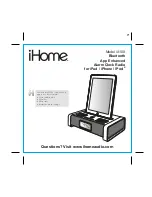
Repea
ter Mode and Addre
ssi
ng
Addressing
39
SRL-35 Operator’s Manual
P/N: 1003224-01
Addressing
Addresses can be used to route a data message to the desired destination or to separate two parallel
networks from each other. In networks with repeaters it is usually necessary to use addresses to prevent
data messages from ending up in loops formed by repeaters.
The SRL-35 allows the use of individual addresses both for reception and transmission. Addresses can be
switched on separately, or simultaneously, in both data transfer directions.
The radio modem contains two transmission and two reception addresses, which are knows as the primary
address and secondary address. The primary address is used whenever data from the serial interface is
transmitted. At the receiving end, the radio modem will receive using either of the two receive addresses.
Secondary transmit address is only used in repeater applications.
Radio modems configured to function as repeaters, will repeat data messages using either the primary or
secondary address, depending upon which address was used during the reception of the data message.
If only one address pair is needed in a network, both addresses must be set the same
(TX1 = TX2 and RX1 = RX2).
It is also possible to transfer the received address onto the serial interface.
The address is composed of two characters totaling 16 bits, resulting in over 65,000 different address
combinations. The address is attached to the beginning of each data packet sent by the radio modem.
When a radio modem receives a data packet whilst using addressing mode, the radio modem will check the
first two characters of each received data packet to ensure that the packet in question was intended for the
correct radio modem.
Address may be selected between 0000h…FFFFh (h = hexadecimal, corresponding decimal numbers are 0-
65535).
Example:
address 1234h (4660 in decimal format), where 12h is ADD H and 34h is ADD L.
Example:
address ABFFh (44031 in decimal format), where ABh is ADD H and FFh is ADD L.
The repeater modem passes TRIMTALK messages also to its serial port unlike for example Pacific
Crest PDL modems.
If error correction is ON (FEC ON) and TRIMTALK mode is activated by using ”SL@S=3”
command, the firmware automatically switches SATEL FEC OFF temporarily, and turns it back at
the mode return.
ADD H
ADD L
DATA
















































